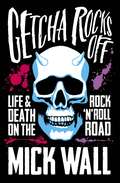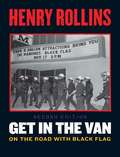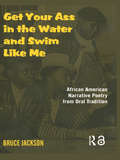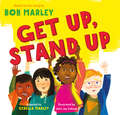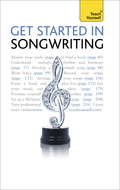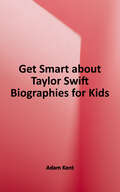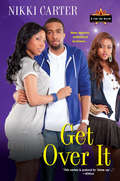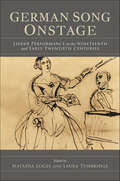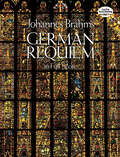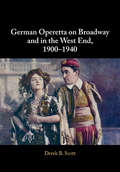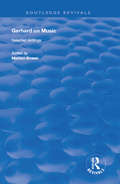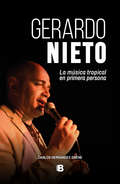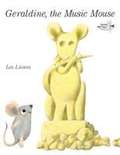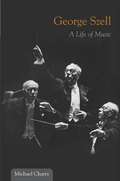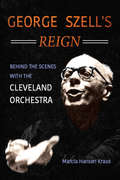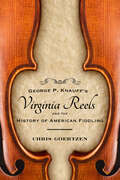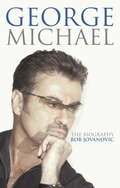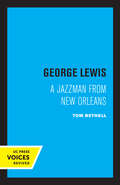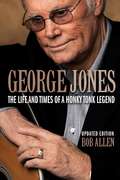- Table View
- List View
Getcha Rocks Off: Sex & Excess. Bust-Ups & Binges. Life & Death on the Rock ‘N’ Roll Road
by Mick Wall'Packed with war stories from a golden age of rock, and insights into the stars that made that music' CLASSIC ROCK MAGAZINE'On reading Getcha Rocks Off you realise just how drastically things have changed in the rock industry but books like this perfectly evoke what they were like. Good times...' RECORD COLLECTORHanging out with rock stars, trying to steal their chicks, or throwing up over their guitars after launching into the hospitality a little too enthusiastically, Mick Wall spent much of the 1980s sprawled in limos and five-star hotels with the biggest rock bands in the world, including Led Zeppelin, Guns N' Roses, Metallica, Black Sabbath, Mötley Crüe, Thin Lizzy, Deep Purple, Alice Cooper, Van Halen, Motörhead and more. He was Kerrang! magazine's star writer and the presenter of Monsters of Rock, his own weekly show on Sky TV, and the decade passed in a blur of hard drugs, hot women, and some of the heaviest people your mother definitely would not like. Depicting a world where vague concepts like 'the future' are disdained in favour of nights that last a week and weeks that last forever, Getcha Rocks Off is a rock apocalypse Cider With Roadies, and a more frank and disturbing Apathy for the Devil. It is the kind of book you need to put on your leather jacket to read, open that bottle of Jack and reach for the Charlie. And let the good times roll...
Getcha Rocks Off: Sex & Excess. Bust-Ups & Binges. Life & Death on the Rock ‘N' Roll Road
by Mick WallHanging out with rock stars, trying to steal their chicks, or throwing up over their guitars after launching into the hospitality a little too enthusiastically, Mick Wall spent much of the 1980s sprawled in limos and five-star hotels with the biggest rock bands in the world, including Led Zeppelin, Guns N' Roses, Metallica, Black Sabbath, Mötley Crüe, Thin Lizzy, Deep Purple, Alice Cooper, Van Halen, Motörhead and more. He was Kerrang! magazine's star writer and the presenter of Monsters of Rock, his own weekly show on Sky TV, and the decade passed in a blur of hard drugs, hot women, and some of the heaviest people your mother definitely would not like. Depicting a world where vague concepts like 'the future' are disdained in favour of nights that last a week and weeks that last forever, Getcha Rocks Off is a rock apocalypse Cider With Roadies, and a more frank and disturbing Apathy for the Devil. It is the kind of book you need to put on your leather jacket to read, open that bottle of Jack and reach for the Charlie. And let the good times roll...
Get in the Van
by Henry RollinsAs a member of the seminal punk band Black Flag, Henry Rollins kept detailed tour diaries that form the basis of Get in the Van. Rollins's observations range from the wry to the raucous in this blistering account of a six-year career with the band - a time marked by crazed fans, vicious cops, near-starvation, substance abuse, and mind numbing all-night drives. Rollins decided to revise this edition by adding a wealth of new photographs, a new foreword, and an afterword to include some "where-are-they-now" information on the people featured in the book. This new edition includes 40 previously unpublished black-and-white photographs from Rollins's private collection and show flyers by artist Raymond Pettibon. Called "a soul-frying experience not to be undertaken by lightweights" by Wired magazine, Get in the Van perfectly embodies what one critic called the "secular gospel" of one of punk and post-punk's most respected and controversial figures.
Get Your Ass in the Water and Swim Like Me: African-American Narrative Poetry from the Oral Tradition, Includes CD
by Bruce JacksonFirst published in 2004. Routledge is an imprint of Taylor & Francis, an informa company.
Get Up, Stand Up
by Bob Marley Cedella MarleyBob Marley's music has inspired millions of listeners around the world with messages of peace, love, and truth. This third picture book adaptation of one of his beloved songs has a timely message for children: To counter injustice, lift others up with kindness and courage. As a young girl goes on with her day in school, she comes across several instances of teasing and intimidation. But with loving action and some help from her friends, she's able to make things right for herself and others. With exuberant pictures by John Jay Cabuay accompanying Marley's iconic lyrics, Get Up, Stand Up is a vibrant testament to the power we all have to make a difference.
Get Started In Songwriting: Teach Yourself
by Sam InglisThis book is an essential companion for any aspiring songwriter, and is ideal for those with no formal musical education. Covering every genre of popular contemporary music, from rock and pop to musical theatre and country/western, it tracks everything from what harnessing your creative potential to finding a hook and selling, performing and promoting your songs. It also offers some material for those at a slightly more advanced level who'd like to understand things such as chords and sequencing. With straightforward notation, this accessible guide from a professional songwriter will prove indispensable for creating and peforming your own songs. NOT GOT MUCH TIME? One, five and ten-minute introductions to key principles to get you started. AUTHOR INSIGHTS Lots of instant help with common problems and quick tips for success, based on the authors' many years of experience. TEST YOURSELF Tests in the book and online to keep track of your progress. EXTEND YOUR KNOWLEDGE Extra online articles at www.teachyourself.com to give you a richer understanding of songwriting. FIVE THINGS TO REMEMBER Quick refreshers to help you remember the key facts. TRY THIS Innovative exercises illustrate what you've learnt and how to use it.
Get Smart About Taylor Swift: Biographies for Kids
by Adam KentGet ready to be inspired by the remarkable life of Taylor Swift! Discover how Taylor's passion for music transformed her from a small-town girl with a guitar into a global superstar. From her chart-topping albums to her fearless advocacy for artists' rights, her impact on the music industry and beyond is undeniable. Taylor's story is one of resilience, empowerment, and staying true to oneself. Get smart about Taylor Swift's incredible journey and how she became the unstoppable force she is today. It's time to dream big and be empowered by Taylor Swift's story!
Get Over It (Fab Life #6)
by Nikki CarterThe bigger the dreams, the bigger the drama. . . With major industry success and a year of college under her belt, Sunday Tolliver is ready to take her singer-songwriter talents to the next level. But new opportunities also mean totally unexpected drama. Her flirtationship with hot video star DeShawn is turning into much more--but the unfinished business between her and ex-boyfriend Sam won't go away. An explosive campus hazing scandal puts her friends up against a powerful sorority--and Sunday's skills on the line. And reluctantly helping her jealous cousin Dreya save her record deal is a major diva face-off that could end both their careers. Now Sunday will have to take mad risks and trust everything she's learned to stay true to her fab life--and herself. "This series is poised to 'blow up'. " --Kirkus "Plenty of reality show-type drama. " --RT Book Reviews on Doing My Own Thing
Get Happy
by Mary AmatoIn this poignant, realistic, contemporary YA by a state master list star, perfect for fans of Sarah Dessen and Gayle Forman, a young songwriter builds a substitute family with her friends in place of the broken family she grew up with.Minerva has been raised by her single mother after her father left them both. On her 17th birthday, she is shocked to discover that he has been trying to keep in touch, but her mother has been sabotaging his attempts. Furious at her mom, she begins to investigate her dad, a famous marine biologist, only to discover that he has a new family, including a beloved, and perfect, stepdaughter--a girl Minerva already knows and despises. As she makes her way, trying to build her performing and songwriting career, her jealousy takes over and threatens to derail her life completely. It is only through the efforts of her best friend, Fin, and the introduction of Hayes, a new young man in her life, that she is able to see clearly who she is and who makes up her family. You may visit Mary Amato at either www.maryamato.com or www.thrumsociety.com, or follow her on Twitter @MaryAmato.
German Song Onstage: Lieder Performance in the Nineteenth and Early Twentieth Centuries
by Natasha Loges and Laura TunbridgeA singer in an evening dress, a grand piano. A modest-sized audience, mostly well-dressed and silver-haired, equipped with translation booklets. A program consisting entirely of songs by one or two composers. This is the way of the Lieder recital these days. While it might seem that this style of performance is a long-standing tradition, German Song Onstage demonstrates that it is not. For much of the 19th century, the songs of Beethoven, Schubert, Schumann, and Brahms were heard in the home, salon, and, no less significantly, on the concert platform alongside orchestral and choral works. A dedicated program was rare, a dedicated audience even more so. The Lied was a genre with both more private and more public associations than is commonly recalled. The contributors to this volume explore a broad range of venues, singers, and audiences in distinct places and time periods—including the United States, the United Kingdom, Russia, and Germany—from the mid-19th century through the early 20th century. These historical case studies are set alongside reflections from a selection of today's leading musicians, offering insights on current Lied practices that will inform future generations of performers, scholars, and connoisseurs. Together these case studies unsettle narrow and elitist assumptions about what it meant and still means to present German song onstage by providing a transnational picture of historical Lieder performance, and opening up discussions about the relationship between history and performance today.
German Requiem in Full Score (Dover Choral Music Scores)
by Johannes BrahmsThis edition of Brahms' greatest, most ambitious vocal work is reprinted from the definitive edition of the composer's works, prepared by Breitkopf & Härtel of Leipzig. Inexpensive but sturdily constructed to provide years of pleasurable use, this full score combines all the musical parts in a clear, readable format, with wide margins, large noteheads, and many other helpful features.Brahms conducted the first major performance of the German Requiem in Bremen Cathedral in April 1868. The occasion -- attended by many distinguished musicians, among them Clara Schumann -- provided the 34-year-old composer with his first great public success. Scored for mixed chorus, solo voices, and full orchestra, the Requiem reflects Brahms' virtuosic grasp of nineteenth-century vocal technique as well as the polyphonic vocal traditions of the previous three centuries. Above all, it radiates Brahms' stalwart individuality, technical mastery, and stirring emotional appeal, which were soon to secure his unique position in the musical world. More than a century after its debut, this masterpiece of choral music is one of the most performed and recorded works in the repertoire of religious music.
German Operetta on Broadway and in the West End, 1900–1940
by Derek B. ScottAcademic attention has focused on America's influence on European stage works, and yet dozens of operettas from Austria and Germany were produced on Broadway and in the West End, and their impact on the musical life of the early twentieth century is undeniable. In this ground breaking book, Derek B. Scott examines the cultural transfer of operetta from the German stage to Britain and the USA and offers a historical and critical survey of these operettas and their music. In the period 1900–1940, over sixty operettas were produced in the West End, and over seventy on Broadway. A study of these stage works is important for the light they shine on a variety of social topics of the period - from modernity and gender relations to new technology and new media - and these are investigated in the individual chapters. This book is also available as Open Access on Cambridge Core.
German Lieder in the Nineteenth Century
by Rufus HallmarkGerman Lieder in the Nineteenth-Century provides a detailed introduction to the German lied. Beginning with its origin in the literary and musical culture of Germany in the nineteenth-century, the book covers individual composers, including Shubert, Schumann, Brahms, Strauss, Mahler and Wolf, the literary sources of lieder, the historical and conceptual issues of song cycles, and issues of musical technique and style in performance practice. Written by eminent music scholars in the field, each chapter includes detailed musical examples and analysis. The second edition has been revised and updated to include the most recent research of each composer and additional musical examples.
Gerhard on Music: Selected Writings
by Meirion Bowen Roberto GerhardThis title was first published in 2000: Catalan-born composer Roberto Gerhard (1896-1970) left significant legacies - both musical and documentary. Exiled in Cambridge with the onset of the Spanish Civil War, he gradually achieved wide recognition by performers and conductors, in both Britain and America, as a composer whose music was essential to the modern repertoire. In this work, the author collects many of the composer's articles, reviews, lectures and broadcasts to demonstrate the full extent and continuity of Gerhard's artistic and creative thinking. The writings have been arranged thematically to emphasize the evolution of Gerhard's musical interests. His attachment to Spanish and Catalonian traditions broadened into a fascination with folk music of all kinds. His studies with Schoenberg in the mid 1920s gave him the key to his own creative individuality; thereafter, his imaginative vitality led him eventually to experiment with electronic and concrete music and he continued breaking new ground, even in his final years.
Gerardo Nieto: La música tropical en primera persona
by Carlos Hernández GreneBiografía de la figura de Gerardo Nieto, el exponente y referente de la música tropical uruguaya, desde diversos ángulos. Gerardo Nieto es uno de los máximos exponentes y referentes de la música tropical en nuestro país. En estas páginas se hace un repaso por la trayectoria musical del cantante, en sus treinta años de carrera, que no deja de lado aspectos de su vida personal. A través de esta biografía, conoceremos en profundidad el nacimiento de Karibe con K, la orquesta tropical récord de los noventa, pero también el mundo de la música tropical uruguaya desde sus comienzos. Este libro invita a una mirada del género tropical distinta, y en especial a uno de sus protagonistas: Gerardo Nieto.
Gerardo Diego’s Creation Myth of Music: Fábula de Equis y Zeda (Routledge Interdisciplinary Perspectives on Literature)
by Judith Stallings-WardSince its publication nearly eight decades ago, the consensus among scholars about Fábula de Equis y Zeda, by the Spanish poet Gerardo Diego (1896-1987) remains unchanged: Fábula is an enigmatic avant-garde curiosity. It seems to rob the reader of the reason necessary to interpret it, even as it lures him or her ineluctably to the task; nevertheless, the present study makes the case that this work is, in fact, not inaccessible, and that what the anhelante arquitecto, intended with his masterpiece was a creation myth that explains the evolution of music in his day. This monograph unlocks the fullness of the poem´s meaning sourced in music’s mythical consciousness and expressed in a poetic idiom that replicates aesthetic concepts and cubist strategies of form embraced by the neoclassical composers Bartok, Falla, Ravel, and Stravinsky.
Geraldine, The Music Mouse
by Leo LionniThe cheerful celebration of art, music, and cheese from beloved four-time Caldecott Honor-winner Leo Lionni. <P><P>While nibbling at a huge hunk of parmesan cheese, Geraldine uncovers a cheese statue of a mouse playing what seems to be a flute but on closer inspection is really its tail. That night Geraldine is woken by silver and gold sounds. “This must be music!” she says. And every night the cheese mouse fills Geraldine’s hideaway with beautiful music. Then one day her hungry mice friends ask her to share her cheese with them. Geraldine’s new love of music infuses her with a magic of her own and provides a satisfying conclusion to this delightful tale. <P><P>Lexile Measure: 0630
Georgia Music
by Helen V. GriffithA little girl and her grandfather share two different kinds of music, that of his mouth organ and that of the birds and insects around his cabin.
George Szell: A Life of Music (Music in American Life)
by Michael CharryThis book is the first full biography of George Szell, one of the greatest orchestra and opera conductors of the twentieth century. From child prodigy pianist and composer to world-renowned conductor, Szell's career spanned seven decades, and he led most of the great orchestras and opera companies of the world, including the New York Philharmonic, the NBC and Chicago Symphonies, the Berlin Philharmonic, the Vienna Philharmonic and Opera, and the Concertgebouw Orchestra. A protégé of composer-conductor Richard Strauss at the Berlin State Opera, his crowning achievement was his twenty-four-year tenure as musical director of the Cleveland Orchestra, transforming it into one of the world's greatest ensembles, touring triumphantly in the United States, Europe, the Soviet Union, South Korea, and Japan. Michael Charry, a conductor who worked with Szell and interviewed him, his family, and his associates over several decades, draws on this first-hand material and correspondence, orchestra records, reviews, and other archival sources to construct a lively and balanced portrait of Szell's life and work from his birth in 1897 in Budapest to his death in 1970 in Cleveland. Readers will follow Szell from his career in Europe, Great Britain, and Australia to his guest conducting at the New York Philharmonic and his distinguished tenure at the Metropolitan Opera and Cleveland Orchestra. Charry details Szell's personal and musical qualities, his recordings and broadcast concerts, his approach to the great works of the orchestral repertoire, and his famous orchestrational changes and interpretation of the symphonies of Robert Schumann. The book also lists Szell's conducting repertoire and includes a comprehensive discography. In highlighting Szell's legacy as a teacher and mentor as well as his contributions to orchestral and opera history, this biography will be of lasting interest to concert-goers, music lovers, conductors, musicians inspired by Szell's many great performances, and new generations who will come to know those performances through Szell's recorded legacy.
George Szell's Reign: Behind the Scenes with the Cleveland Orchestra
by Marcia Hansen KrausGeorge Szell was the Cleveland Orchestra's towering presence for over a quarter of a century. From the boardroom to the stage, Szell's powerful personality affected every aspect of a musical institution he reshaped in his own perfectionist image. Marcia Hansen Kraus's participation in Cleveland's classical musical scene allowed her an intimate view of Szell and his achievements. As a musician herself, and married to an oboist who worked under Szell, Kraus pulls back the curtain on this storied era through fascinating interviews with orchestra musicians and patrons. Their recollections combine with Kraus's own to paint a portrait of a multifaceted individual who both earned and transcended his tyrannical reputation. If some musicians hated Szell, others loved him or at the least respected his fair-minded toughness. A great many remember playing under his difficult leadership as the high point in their lives. Filled with vivid backstage stories, George Szell's Reign reveals the human side of a great orchestra ”and how one visionary built a premier classical music institution.
George P. Knauff's Virginia Reels and the History of American Fiddling (American Made Music Series)
by Chris GoertzenGeorge P. Knauff's Virginia Reels (1839) was the first collection of southern fiddle tunes and the only substantial one published in the nineteenth century. Knauff's activity could not anticipate our modern contest-driven fiddle subcultures. But the fate of the Virginia Reels pointed in that direction, suggesting that southern fiddling, after his time, would happen outside of commercial popular culture even though it would sporadically engage that culture. Chris Goertzen uses this seminal collection as the springboard for a fresh exploration of fiddling in America, past and present. He first discusses the life of the arranger. Then he explains how this collection was meant to fit into the broad stream of early nineteenth-century music publishing. Goertzen describes the character of these fiddle tunes' names (and such titles in general), what we can learn about antebellum oral tradition from this collection, and how fiddling relates to blackface minstrelsy. Throughout the book, the author connects the evidence concerning both repertoire and practice found in the Virginia Reels with current southern fiddling, encompassing styles ranging from straightforward to fancy—old-time styles of the Upper South, exuberant West Virginia styles, and the melodic improvisations of modern contest fiddling. Twenty-six song sheets assist in this discovery. Goertzen incorporates performance descriptions and music terminology into his accessible, engaging prose. Unlike the vast majority of books on American fiddling—regional tune collections or histories—this book presents an extended look at the history of southern fiddling and a close examination of current practices.
George Michael: The biography
by Rob JovanovicGeorge Michael is an enigma. While he is one of the most open and vocal pop superstars on the planet, he also fiercely protective of his privacy. From the formation of Wham! In 1981 he immediately found fame and fortune beyond his wildest dreams. His music formed the soundtrack to the 1980s and he achieved all of this despite growing up in a dysfunctional family where his father openly proclaimed that George had no talent.Wham! split in 1986 but Michael went on to greater things as a solo artist. Along the way he has been embroiled in several controversies, but in refreshing contrast to other superstars, he has been happy to address his issues head-on in the media. Rob Jovanovic's biography tackles all the issues that formed George Michael and his place as a cultural icon. It also, for the first time, analyses Michael's musical output and groundbreaking videos.
George Michael: The biography
by Rob JovanovicGeorge Michael is an enigma. While he is one of the most open and vocal pop superstars on the planet, he also fiercely protective of his privacy. From the formation of Wham! In 1981 he immediately found fame and fortune beyond his wildest dreams. His music formed the soundtrack to the 1980s and he achieved all of this despite growing up in a dysfunctional family where his father openly proclaimed that George had no talent.Wham! split in 1986 but Michael went on to greater things as a solo artist. Along the way he has been embroiled in several controversies, but in refreshing contrast to other superstars, he has been happy to address his issues head-on in the media. Rob Jovanovic's biography tackles all the issues that formed George Michael and his place as a cultural icon. It also, for the first time, analyses Michael's musical output and groundbreaking videos.
George Lewis: A Jazzman from New Orleans
by Tom BethellGeorge Lewis, one of the great traditional jazz clarinetists, was born in 1900 at about the same time that jazz itself first appeared in New Orleans. And by the time he died, on the last day of 1968, New Orleans jazz had pretty much run its course, too. By then a jazz museum stood on Bourbon Street, and a cultural center was under construction where Globe Hall had Stood. Lewis's life thus paralleled that of New Orleans jazz, and in his later years hew as the best known standard bearer of his city's music. He came to the attention of the jazz world at the time of the so-called "New Orleans Revival" of the 1940's, when veteran trumpeter Bunk Johnson was recorded by a number of jazz enthusiasts, notably William Russell. In this new biography, Tom Bethell challenges a favorite myth of the history of jazz: that the music became moribund in New Orleans after the legal red light district, Storyville, was closed in 1917, resulting in most jazz musicians going "up the river." In fact, Bethell shows, many more jazzmen stayed in the city than left, and the musical style continued to develop and grow. Thus the jazz fans who arrived in the city in the early 1940's did not encounter a "revival" of an old style so much as an ongoing tradition, with clarinetists like Lewis having been influenced by Benny Goodman and the Swing Era in addition to Lorenzo Tio and the Creole School. After Bunk Johnson's death in 1949, at a time when many other social changes were beginning to be felt in the city, the New Orleans jazz tradition began to go into a decline. It became increasingly rigid and repetitive, and was often designed to please what one observer called "Dixieland fans yelling for their favorite members." The book is based on lengthy research in New Orleans, including interviews with George Lewis shortly before his death, and unpublished material from the diaries kept by William Russell on his visits to New Orleans between 1942 and 1949. It also includes a statement by Lewis on jazz and the best way to play it and a complete Lewis discography. This title is part of UC Press's Voices Revived program, which commemorates University of California Press's mission to seek out and cultivate the brightest minds and give them voice, reach, and impact. Drawing on a backlist dating to 1893, Voices Revived makes high-quality, peer-reviewed scholarship accessible once again using print-on-demand technology. This title was originally published in 1977.
George Jones: The Life and Times of a Honky Tonk Legend
by Bob AllenGeorge Jones's nearly 60-year recording and performing career has had a profound influence on modern country music and influenced a younger generation of singers, including Garth Brooks, Alan Jackson, Randy Travis, Tim McGraw, and Trace Adkins. As Merle Haggard said of Jones in Rolling Stone magazine, “His voice was like a Stradivarius violin: one of the greatest instruments ever made.” Jones's saga is a larger-than-life tale of rags to riches and back to rags again. He was born into near poverty in a backwater patch of East Texas. His formal education ended early; by his early teens, he was singing on the streets of Beaumont, Texas, for tips. After beginning to record in the mid-1950s Jones became, by sheer dint of his vocal prowess, one of Nashville's most celebrated honky-tonk singers. But from the start, Jones's life, as often reflected in his music, was shaped by misdirection, chaos, turmoil, and emotional strife aggravated by a ferocious appetite for alcohol. Fame and adulation seemed to merely intensify his personal travails. Jones's story has a relatively happy ending. With the help of fourth wife Nancy during the final decade and a half of his life, he got clean and sober, was feted as a much-revered elder statesman for the music, and, by most accounts, found peace of mind at long last.
